Staring at a patch of green grass and wondering how to start a garden out of it can be a daunting task. But with a few simple steps, you can easily create a beautiful garden bed that weeds won't take over within weeks.
Where To Start
I always start by mowing the grass low, and I mean really low. This is to try and kill off as much of the grass as possible before we start our bed, so don't go easy here - set your mower as low as it will go and butcher that grass!
Alternatively, if you have time to plan ahead, you can put down a cover to kill off as much of the grass and weeds as possible before creating your bed.
Any cover that blocks the light will work for this, and you want it to be down for at least 6 months or longer.
Once you have hurt the grass it is time to lay down our cardboard, this will block out the light to the grass and weeds and kill them over time. But it will also rot away, so it will be as if it was never even there after a few months!
Depending on what you are dealing with underneath, you can go more extreme with the cardboard and add multiple layers.
If your base is mainly gras,s then you might be able to get away with a single layer as long as you have healthy overlaps.
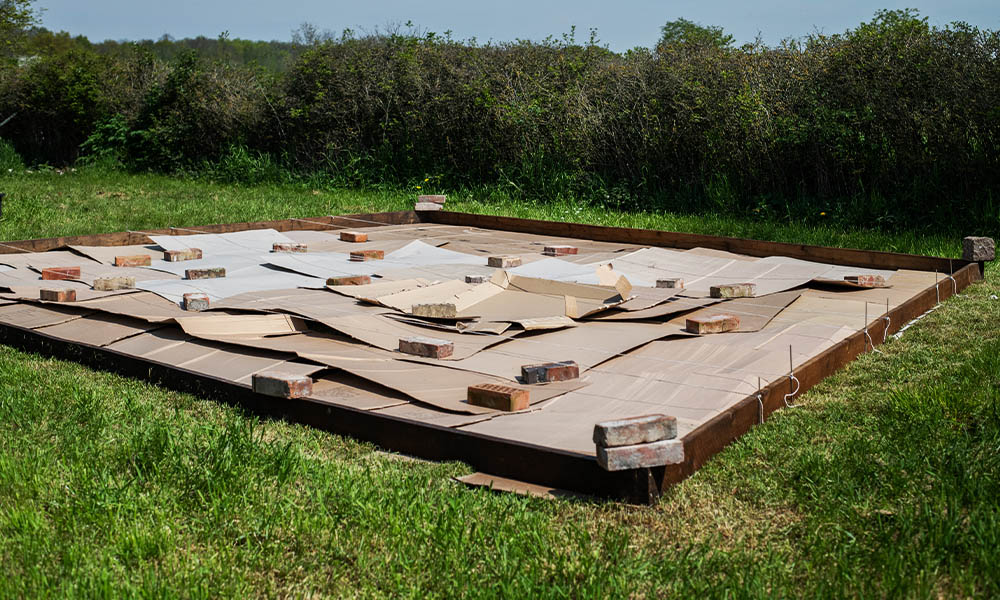
In the example above, old boxes have been used and overlapped very generously. If you are going to use old cardboard, then make sure it is not shiny and printed, as this means it has a thin layer of plastic on it too.
Also, remove any tape, or else you will find it in your beds for years to come!
You can also buy cardboard by the roll for a reasonable price. This is much simpler if you have a large area to cover.
In my new field, I have a large roll of cardboard that I get out every time I need to start a bed.
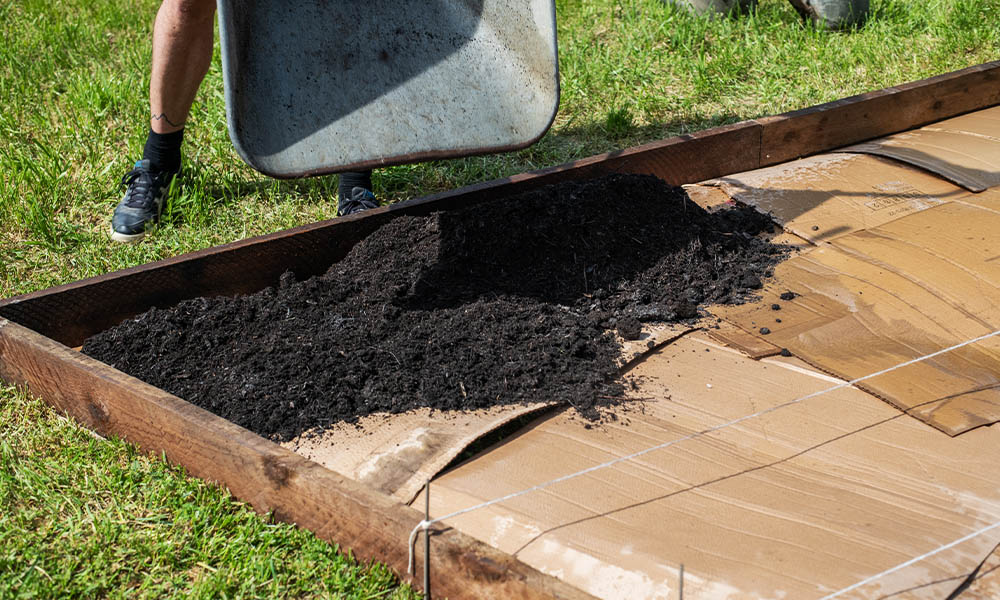
Once your cardboard is down, it is time to add your compost. You want this to be at least a couple of inches deep, but the deeper the better.
This obviously comes with a cost if you don't happen to have a tonne of compost already. You can get away with just a couple of inches, but the more you put down, the more likely you are to kill off all the grass and weeds underneath. Your plants have more compost to grow in straight away before the cardboard rots away to the topsoil below.
When it comes to what compost to use then the ideal would be your own homemade compost. But if that is not possible due to the quantity needed, then I often go with cheaper composts here. You can always amend them and improve them over time, so no need to splurge all your budget on high-quality compost.
You will also be topping these up every year with new compost and improving the soil quality over time.
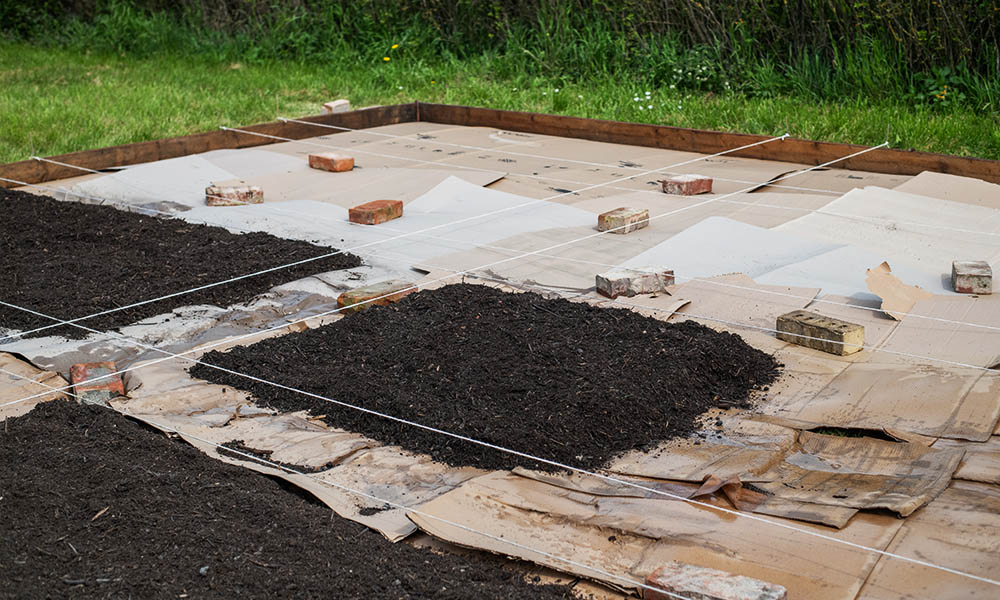
If you want nice, clean lines, you can lay out your beds using string lines to achieve them.
A little planning here can go a long way, and that bit of extra effort at the beginning can make a big difference in how your beds look.
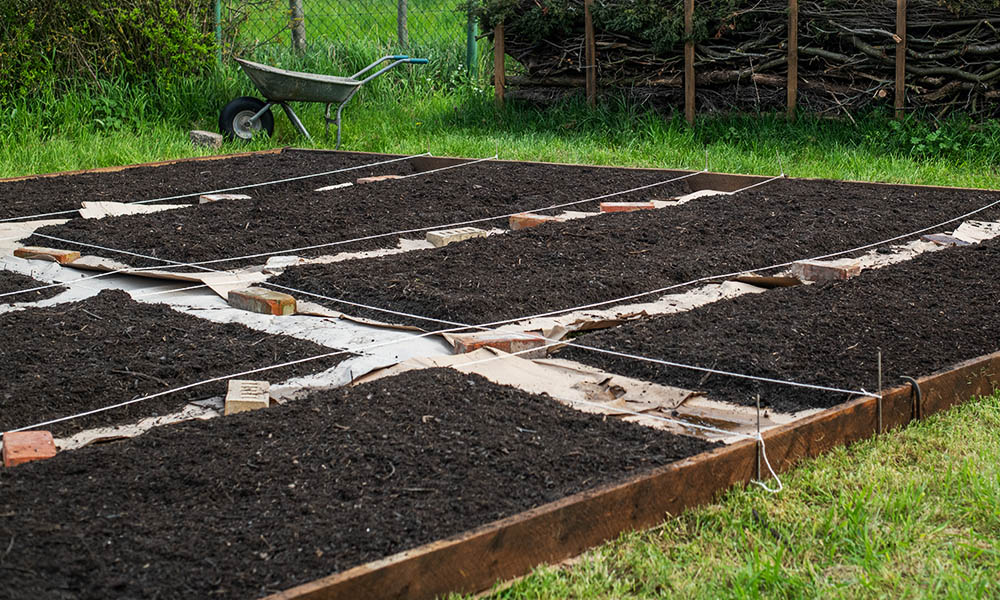
If you want low-maintenance pathways, you can fill the gaps with wood chips. You could also add a sprinkling of compost and plant a living path with something like clover.
Or leave them uncovered and let the grass come back through on the pathways. It will try and creep back into the beds this way, so it is more work, but you also get extra grass clippings to make compost with, and it's cheaper!
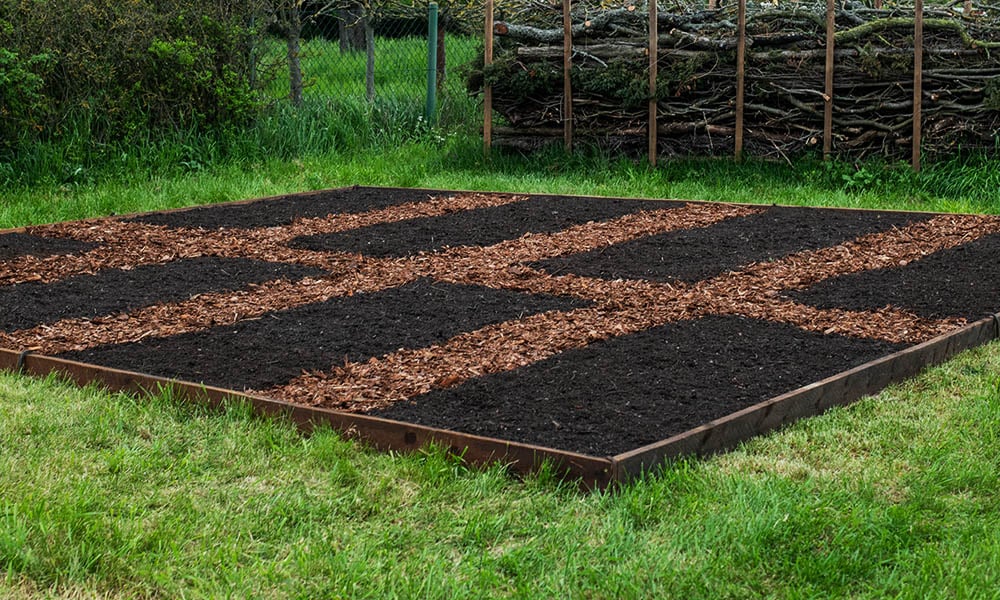


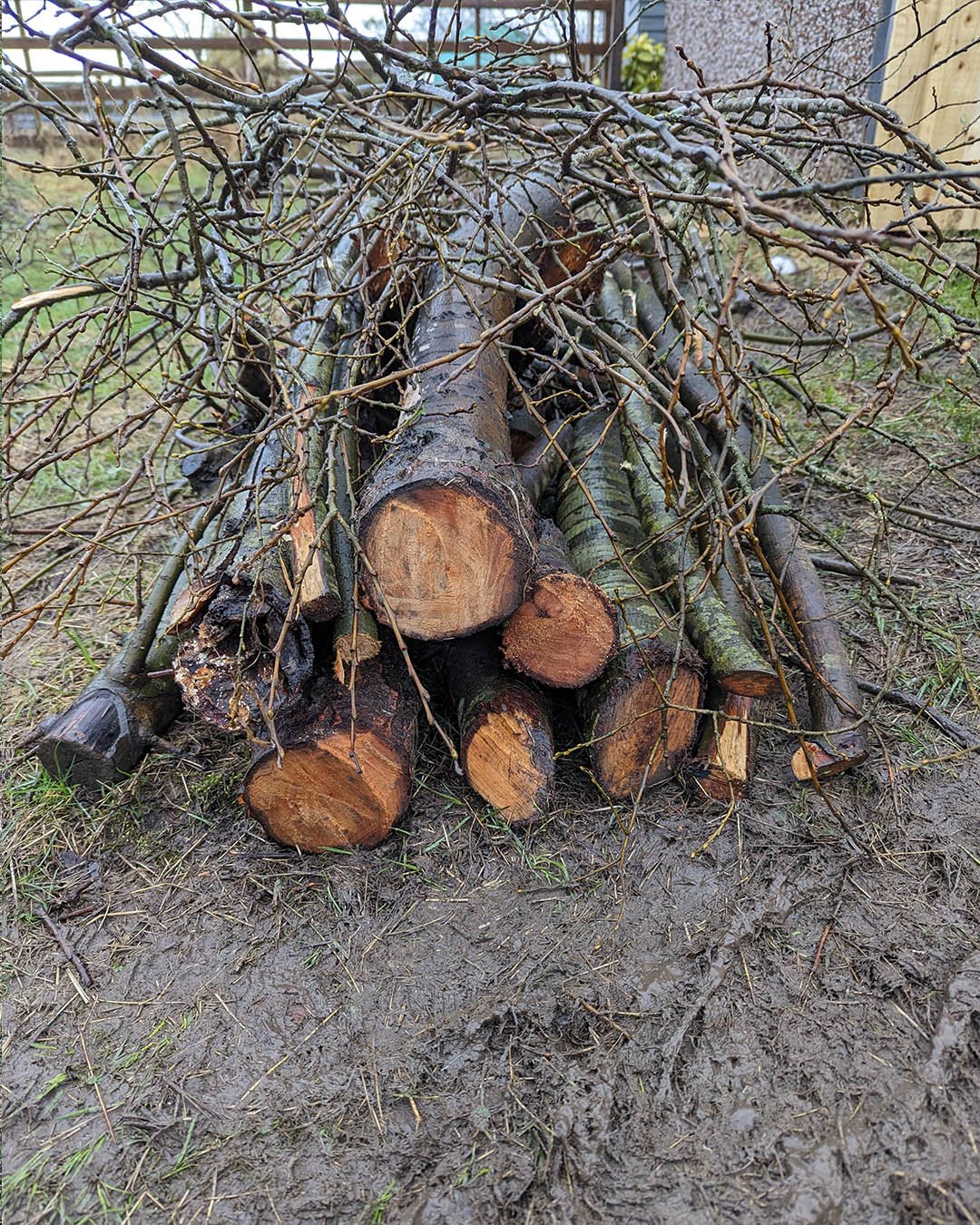
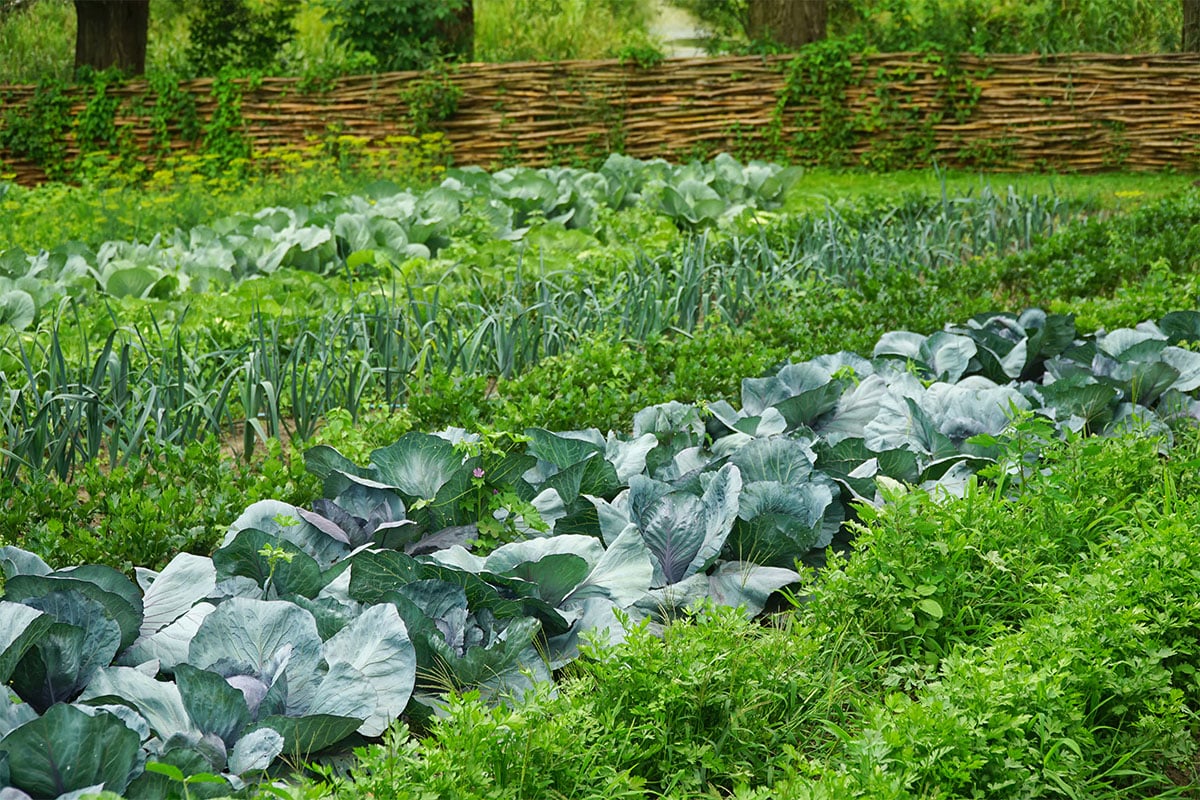
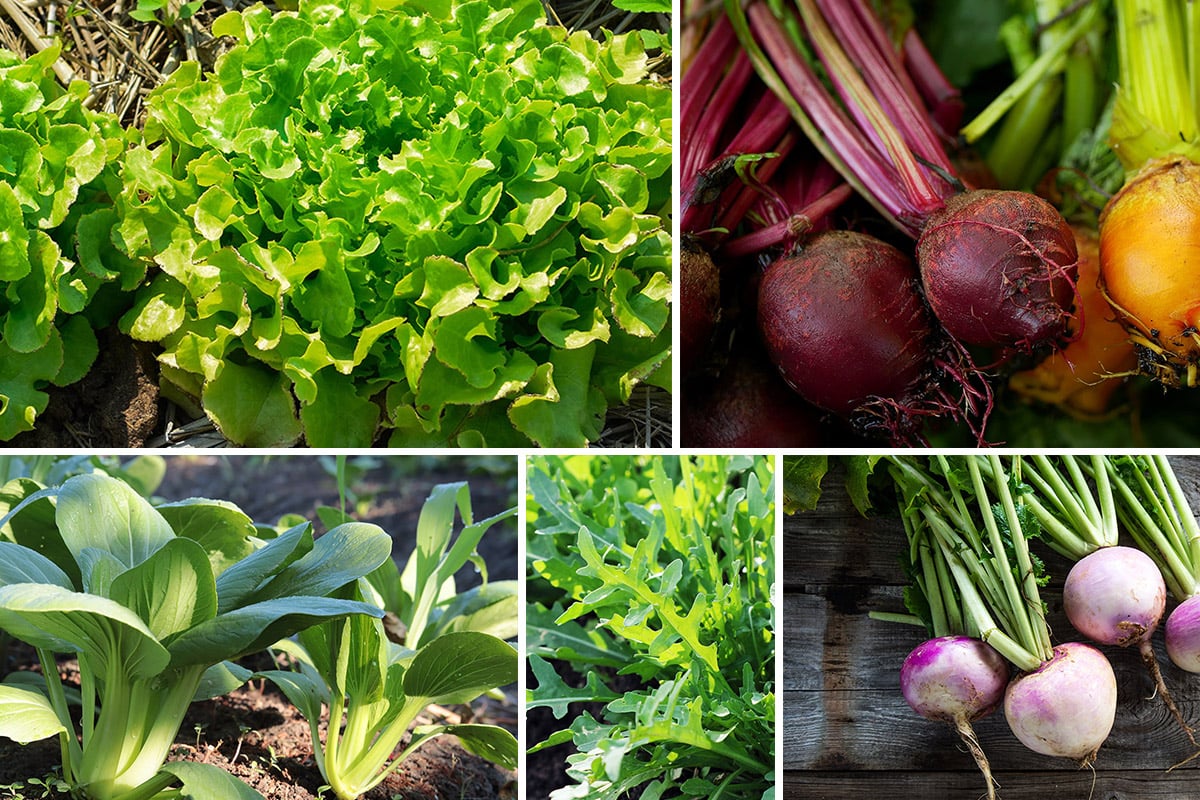
Leave a Reply